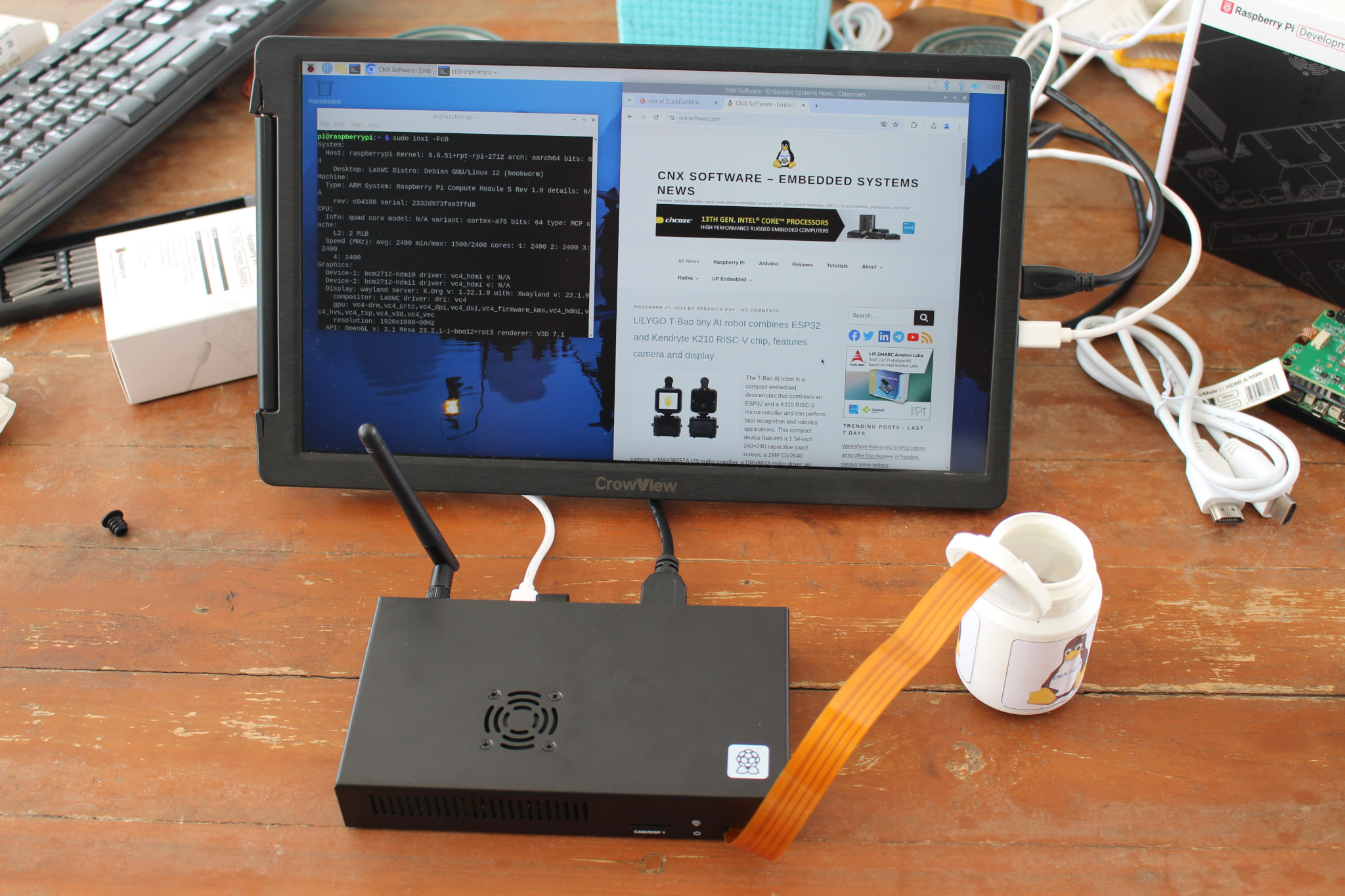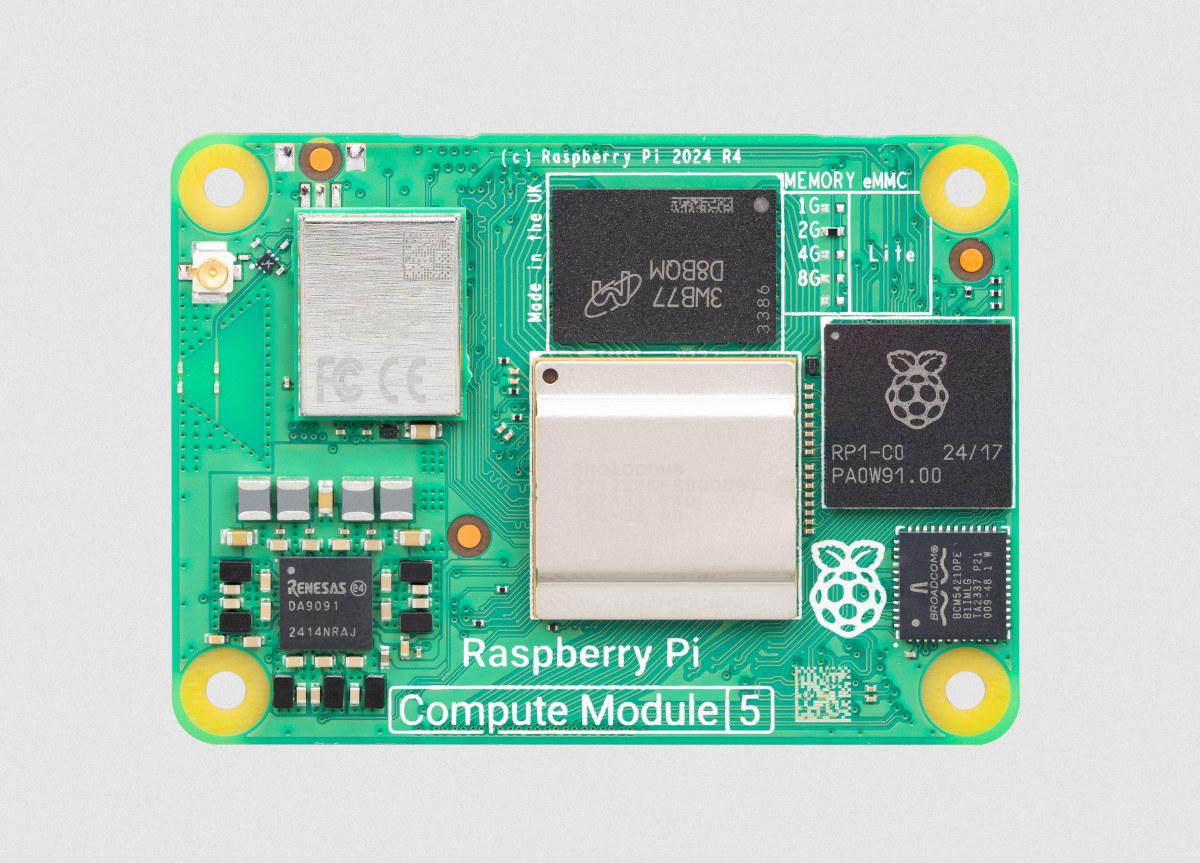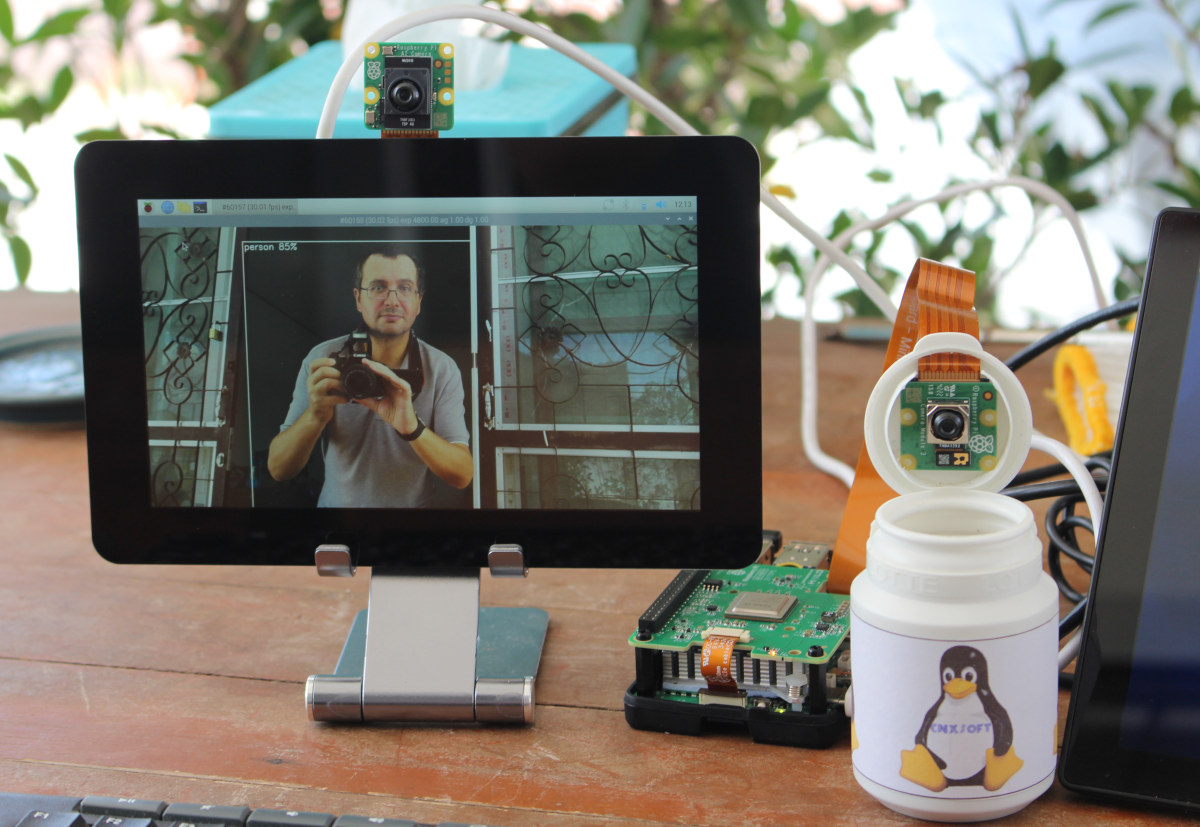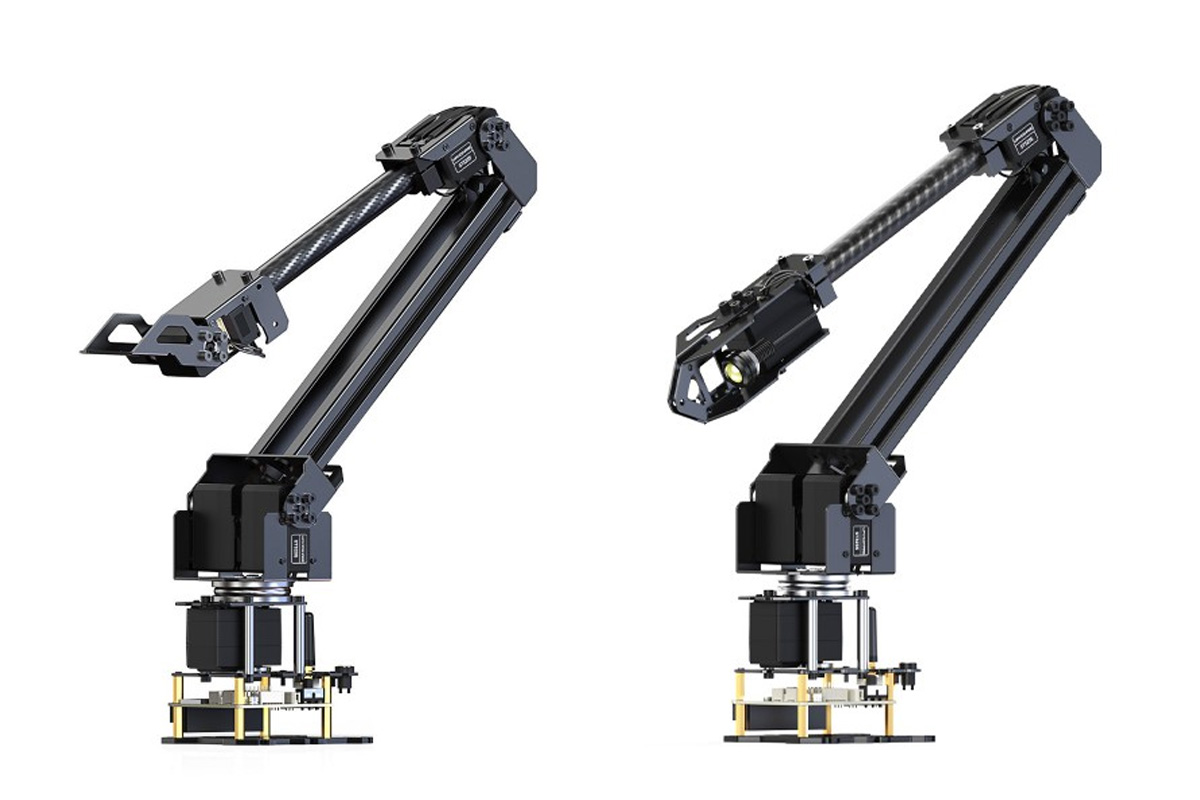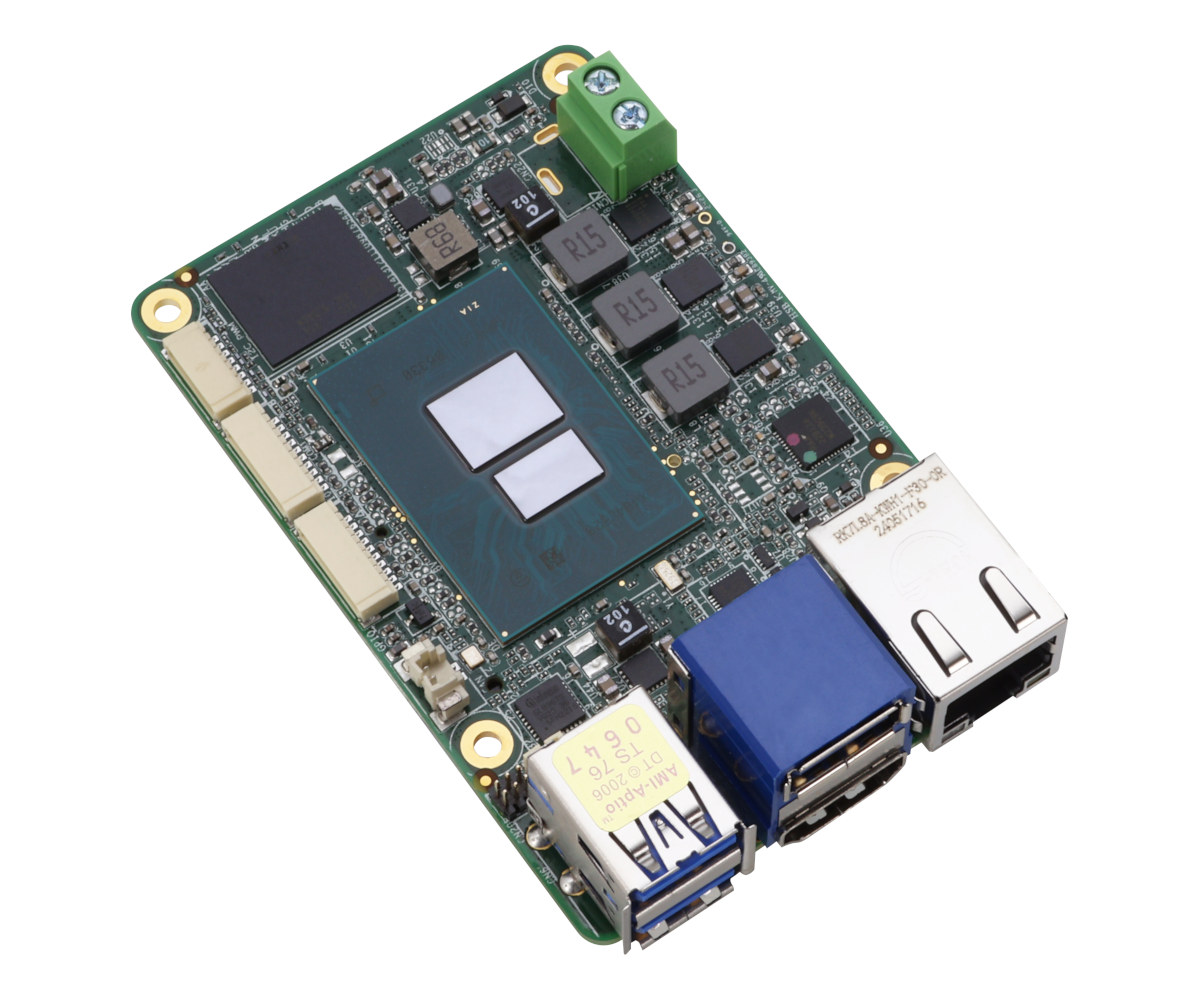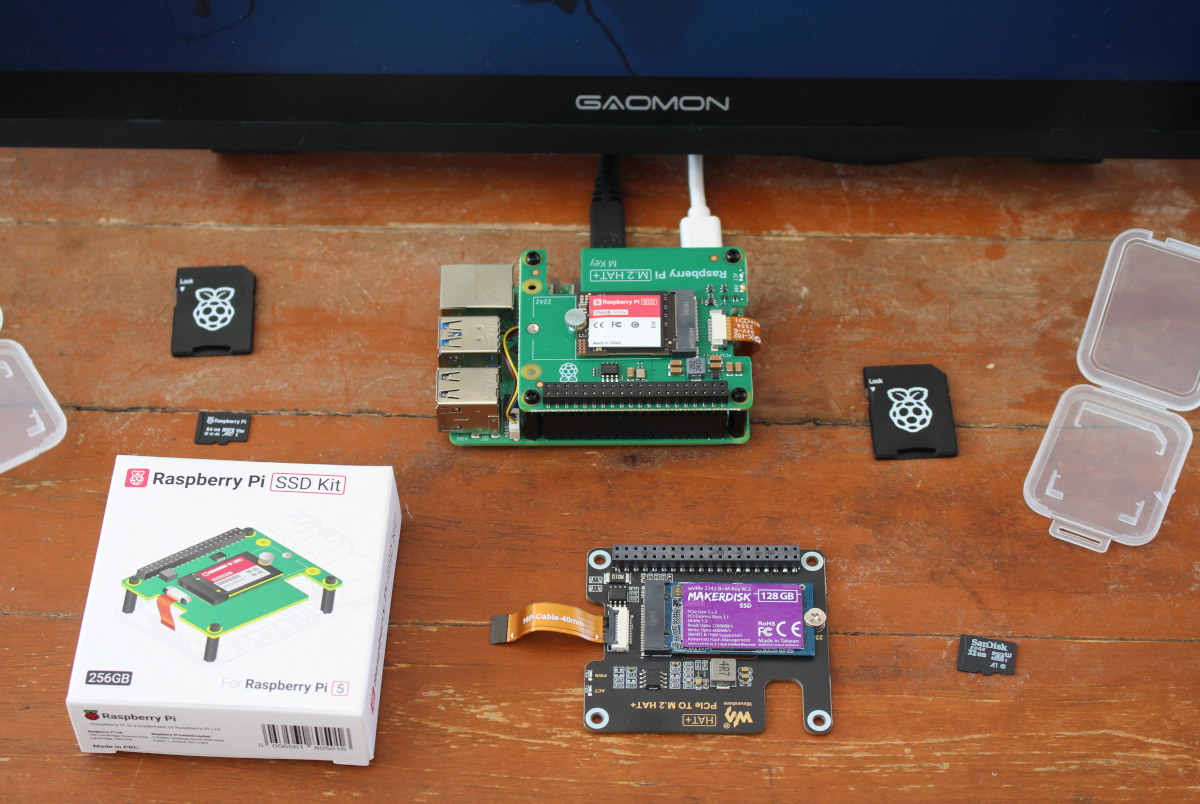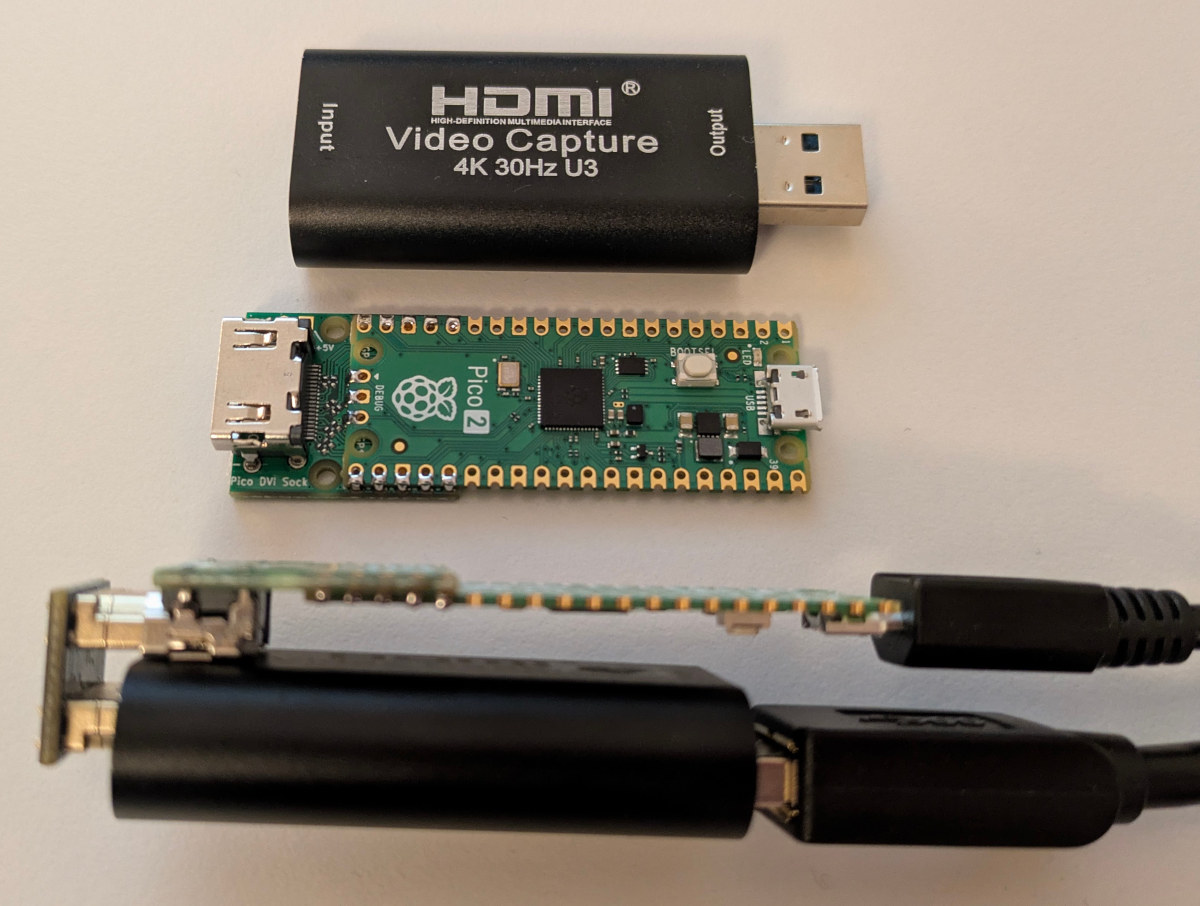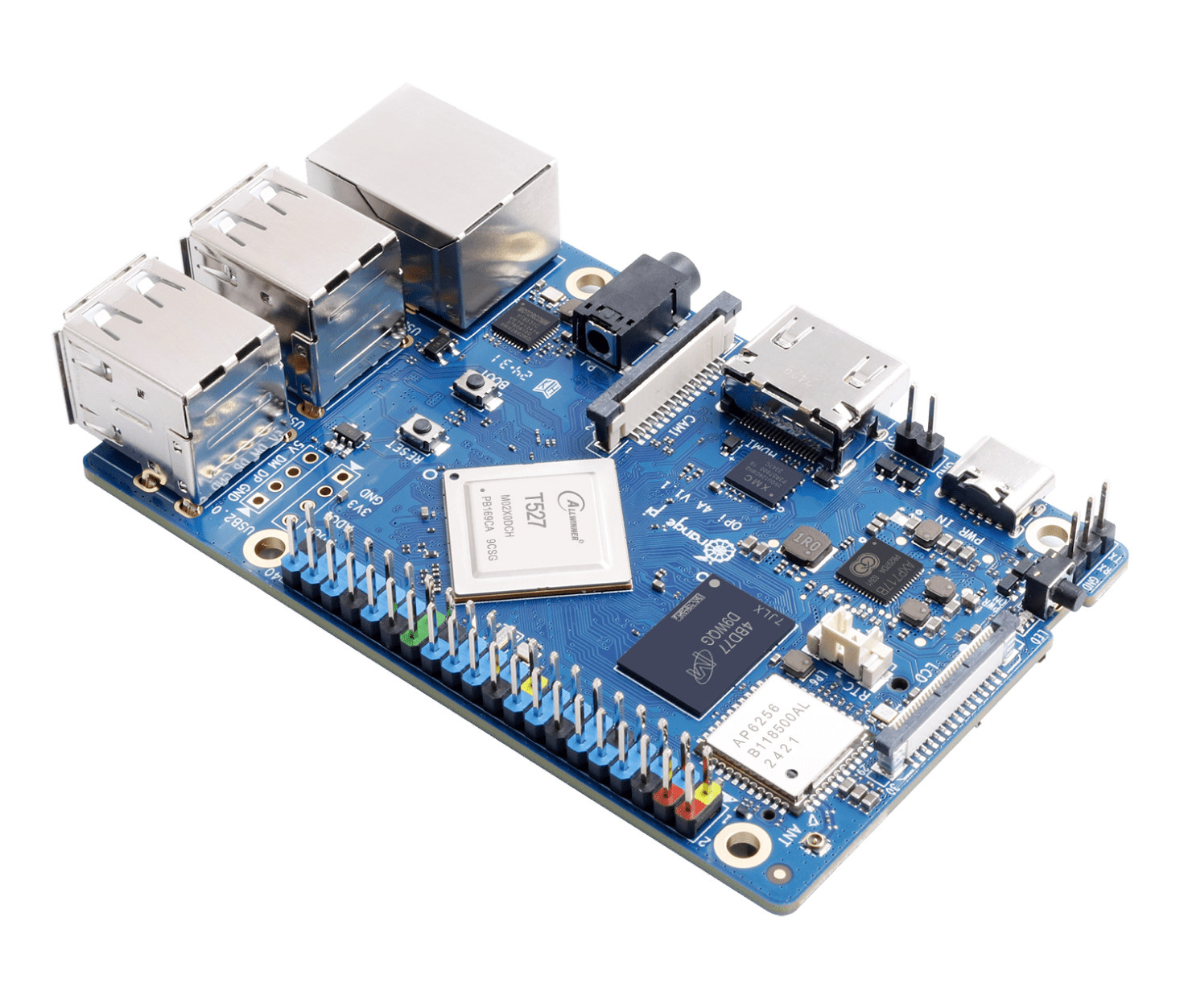Raspberry Pi has just launched the Compute Module 5 (CM5) and the company sent me a “Raspberry Pi Development Kit for CM5” for review and to play around with the new Broadcom BCM2712 system-on-module succeeding the Raspberry Pi Compute Module 4 (CM4) introduced in 2020. Today, I’ll have a first look at the development kit checking out the hardware, connecting accessories, booting it up to Raspberry Pi OS, and collecting some basic system information. I’ll do a more in-depth review in a few weeks. Unboxing of the Raspberry Pi Development Kit for CM5 I received the kit in a package reading “Raspberry Pi Development Kit” and “For Raspberry Pi CM5”. That’s a good start… The bottom side lists the package’s content which I will check out shortly, and a link to the documentation. Let’s see what we have with the Raspberry Pi Development Kit: a Raspberry Pi IO Case, a […]
Raspberry Pi CM5 launched with Broadcom BCM2712 SoC, up to 16GB LPDDR4 ECC memory
The Raspberry Pi Compute Module 5, or Raspberry Pi CM5 for shorts, is now available with up to 16GB LPPDR4 ECC memory, up to 64GB eMMC flash, and an optional WiFi 5 and Bluetooth 5.0 LE wireless module. It has the same form factor as the Raspberry Pi CM4 and CM4 Lite launched in 2020 but delivers a significant performance boost. The Raspberry Pi CM5 is basically a tiny version of the Raspberry Pi 5 SBC designed for embedded applications with a Broadcom BCM2712 quad-core Cortex-A76 SoC, and offered with 2GB to 16GB RAM, optional 16GB to 64GB eMMC flash, and optional WiFi 5 and Bluetooth 5.0 module. As usual, there are also Raspberry Pi CM5 Lite versions without any eMMC flash meant to be booted from a microSD card or an SSD on the carrier board. Raspberry Pi Compute Module 5 Raspberry Pi CM5 specifications: SoC – Broadcom BCM2712 […]
Getting Started with Raspberry Pi AI HAT+ (26 TOPS) and Raspberry Pi AI camera
Raspberry Pi recently launched several AI products including the Raspberry Pi AI HAT+ for the Pi 5 with 13 TOPS or 26 TOPS of performance and the less powerful Raspberry Pi AI camera suitable for all Raspberry Pi SBC with a MIPI CSI connector. The company sent me samples of the AI HAT+ (26 TOPS) and the AI camera for review, as well as other accessories such as the Raspberry Pi Touch Display 2 and Raspberry Pi Bumper, so I’ll report my experience getting started mostly following the documentation for the AI HAT+ and AI camera. Hardware used for testing In this tutorial/review, I’ll use a Raspberry Pi 5 with the AI HAT+ and a Raspberry Pi Camera Module 3, while I’ll connect the AI camera to a Raspberry Pi 4. I also plan to use one of the boards with the new Touch Display 2. Let’s go through a […]
Waveshare RoArm-M2 ESP32 robotic arms offer four degrees of freedom, various servo options
Waveshare has recently launched the RoArm-M2-S and RoArm-M2-Pro ESP32 robotic arms with four degrees of freedom, or 4-DOF for short. The main difference is that the RoArm-M2-S is equipped with standard servos, while the RoArm-M2-Pro features all-metal ST3235 bus servos, adding more durability and performance. Designed for educational and robotics applications, the 4-DOF RoArm-M2 is sturdy yet lightweight, built using carbon fiber and aluminum alloy. It can handle payloads up to 0.5kg and has a workspace diameter of 1 meter. The arm offers high precision with a 12-bit magnetic encoder and dual-drive technology for improved torque and stability. On top of that, it features a 12-bit magnetic encoder and dual-drive technology for improved torque and stability. Other features include a 360° omnidirectional base and support for both wireless (WiFi, ESP-NOW) and wired (USB) control. These features make this device suitable for various applications including industrial automation, education, research, and DIY robotics projects. Waveshare […]
UP 710S – A slim, credit card-sized Intel N97 development board with M.2 E-Key WiFi socket and GPIO, I2C, SPI, and COM wafers
AAEON’s UP 710S is a credit card-sized Intel N97 SBC and development board with an M.2 E-Key socket for a WiFi and Bluetooth module, and similar interfaces such as gigabit Ethernet, USB 2.0, USB 3.0, and HDMI outputs as found in Raspberry Pi boards. It’s very similar to the UP 7000 SBC with Intel N50, N97, or N100 CPU, but it’s designed to be slimmer so the 40-pin Raspberry Pi-compatible header has been replaced by 1mm pitch wafers exposing GPIO, I2C, SPI, and serial (COM) interfaces. UP 710S specifications: Alder Lake-N SoC Default – Intel Processor N97 quad-core processor up to 3.6 GHz with 6MB cache, 24EU Intel UHD Graphics Gen 12 @ 1.2 GHz; TDP: 12W Options – Intel N50, N100, N200 System Memory – Up to 8GB LPDDR5 Storage Up to 128GB eMMC flash 256Mbit flash for the BIOS/UEFI Video Output – HDMI 1.4b video output up to 4Kp30 […]
Raspberry Pi SSD Kit and Class A2 microSD cards review with Raspberry Pi 5
Selecting a microSD card, and to a lesser extent an SSD, for your Raspberry Pi may feel like walking through a landmine field with fake microSD cards that may perform poorly and severely impact the performance and/or reliability of your Raspberry Pi, and you’ll find plenty of articles helping you select a good microSD card for your Raspberry Pi. That’s probably why Raspberry Pi Holdings decided to launch its own Raspberry Pi-branded class A2 microSD cards and NVMe SSDs, so users can be sure they got a certified storage device that should perform as advertised as long as they purchase those from some authorized resellers. The company sent me 32GB and 64GB Raspberry Pi microSD cards and a 256GB Raspberry Pi SSD kit for testing, so I’ll test those in this review and compare them against other SSDs and microSD cards I’m currently using. Since we’ve not covered the new […]
High-speed data acquisition with Raspberry Pi Pico 2’s HSTX interface and HDMI to USB 3.0 video capture dongle
We previously explained the HSTX high-speed serial transmit interface of the Raspberry Pi RP2350 microcontroller was mostly useful for video outputs and display interfaces since it can only transmit, and not receive data. But Steve Markgraf found another use case for the HSTX interface – high-speed data acquisition – combining a Raspberry Pi Pico 2 board with the DVI Sock board for Pico and one of those cheap MS2130-based HDMI to USB 3.0 video capture dongles. He managed to stream out up to 75 MB/s of real-time data from an overclocked RP2350 to a host computer with a USB 3.0 port. The Adafruit Feather RP2350 HSTX board should also work, but also not been tested. Steve’s “hsdaoh-rp2350” data acquisition over HDMI firmware is based on the dvi_out_hstx_encoder example from Raspberry Pi using the HSTX interface for DVI output and code by Shuichi Takano implementing the HDMI data island encoding required […]
Orange Pi 4A low-cost octa-core SBC is powered by Allwinner T527 Cortex-A55 AI SoC with a 2TOPS NPU
Orange Pi 4A is a new low-cost credit card-size single board computer (SBC) powered by an Allwinner T527 octa-core Cortex-A55 processor with a 2TOP NPU and offered with either 2GB or 4GB RAM. The board also comes with multiple storage options: a 128 or 256Mbit SPI NOR flash for the bootloader, an eMMC socket for up to 128GB modules, an M.2 socket for NVMe SSDs, and a microSD card slot. It’s also equipped with four USB 2.0 ports, a gigabit Ethernet port, three display interfaces (HDMI, MIPI DSI, eDP), two camera interfaces, and a 40-pin “Raspberry Pi” header. The Orange Pi 4A is somewhat equivalent to an octa-core Raspberry Pi 3/4 with some extra features. Orange Pi 4A specifications: SoC – Allwinner T527 CPU Octa-core Arm Cortex-A55 @ up to 1.8GHz (four cores) and up to 1.42 GHz (four cores) XuanTie E906 RISC-V core @ 200MHz GPU – Arm Mali-G57 […]


